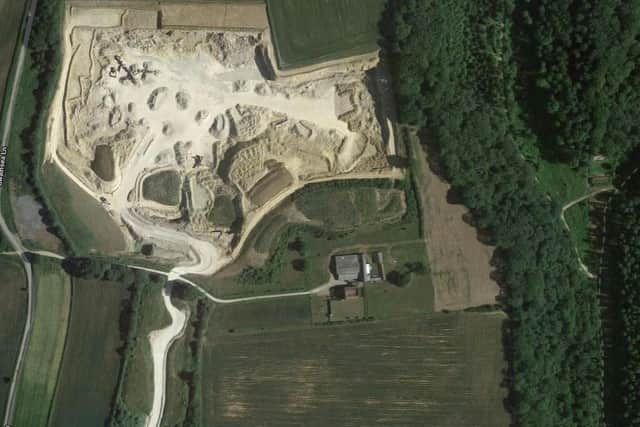Bid to extend life of quarry near North Yorkshire Moors Railway should be scrutinised, says Natural England
The government’s advisor for the natural environment said close consideration should be given to the direct and indirect effects on the designated landscape of the proposal by Breedon Group – the largest independent construction materials group in the UK – to blast a further million tonnes of limestone from Newbridge Quarry, north of Pickering.
The 75-year-old quarry was saved from closure in 2013, securing scores of supply chain engineering and haulage jobs, after a deal was struck to supply aggregates for the polyhalite mine being developed in the national park at Sneaton, near Whitby.
Advertisement
Hide AdAdvertisement
Hide AdPlanning documents submitted to North Yorkshire County Council state the firm needs until the end of 2026 to extract the remaining 1.1 million tonnes of limestone estimated to be left within the permitted reserve, but in 2009 it was agreed the 80-hectare quarry site would be restored after 2022.


A restored southern section of the quarry includes a designated Site of Special Scientific Interest (SSSI) featuring “the best available ammonite-bearing sections in the Upper Calcareous Grit in Yorkshire”, while ancient woodland, another SSSI, the line of the North Yorkshire Moors Railway and the national park form its boundaries.
The entire quarry site is also situated within an Area of High Landscape Value, a local landscape designation in the Ryedale Local Plan.
In a report to address concerns over the impact of the proposal, the firm says it uses explosive charges within shot holes to loosen the limestone from the face and that all blasting operations follow recognised best practice.
Advertisement
Hide AdAdvertisement
Hide AdIt adds excavated materials are transported from the working face to the mobile plant site by dump trucks using dedicated haulage routes within the working area and that its processing plant comprises a crushing plant which sorts the excavated material.
The report states: “The proposals do not seek to increase the rate of extraction or modify the overall volumes, and thus there would be no intensification of working. As such, there would be no increase in traffic movements from the site associated with the proposed extension of time.”
The initial environmental impact study finds the proposal’s consequences for the landscape during working would be “moderate and adverse” and the visual impacts “moderate to substantial and adverse”.
However, it states: “The proposed programme to progressively work and restore the site at the earliest available opportunity would minimise the potential cumulative landscape and visual impacts.”
Advertisement
Hide AdAdvertisement
Hide AdIn response to the proposal, Natural England said assessments of any physical effects of the development, such as changes in topography, would need to be assessed to help consider if the site could take the changes and to make proposals for conserving, enhancing or regenerating its character.
It added it would encourage measures to develop “green infrastructure” as well as help people access the countryside for quiet enjoyment, such as reinstating and creating footpaths and bridleways.